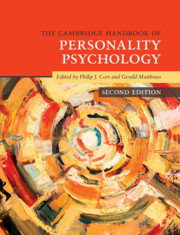Book contents
- The Cambridge Handbook of Personality Psychology
- Cambridge Handbooks in Psychology
- The Cambridge Handbook of Personality Psychology
- Copyright page
- Contents
- Figures
- Tables
- Contributors
- Preface
- General Introduction
- Part I Foundational Issues: History and Approaches to Personality
- Part II Description and Measurement: How Personality Is Studied
- Part III Development, Health and Change: Life Span and Health Outcomes
- Part IV Biological Perspectives: Evolution, Genetics and Neuroscience of Personality
- Part V Cognitive and Motivational Perspectives: Dynamic Processes of Personality
- Part VI Social and Cultural Processes: Personality at the Intersection of Society
- Part VII Applications of Personality Psychology: Personality Traits and Processes in Action
- Addendum: Statistical Analyses and Computer Programming in Personality
- Index
- References
Part II - Description and Measurement: How Personality Is Studied
Published online by Cambridge University Press: 18 September 2020
- The Cambridge Handbook of Personality Psychology
- Cambridge Handbooks in Psychology
- The Cambridge Handbook of Personality Psychology
- Copyright page
- Contents
- Figures
- Tables
- Contributors
- Preface
- General Introduction
- Part I Foundational Issues: History and Approaches to Personality
- Part II Description and Measurement: How Personality Is Studied
- Part III Development, Health and Change: Life Span and Health Outcomes
- Part IV Biological Perspectives: Evolution, Genetics and Neuroscience of Personality
- Part V Cognitive and Motivational Perspectives: Dynamic Processes of Personality
- Part VI Social and Cultural Processes: Personality at the Intersection of Society
- Part VII Applications of Personality Psychology: Personality Traits and Processes in Action
- Addendum: Statistical Analyses and Computer Programming in Personality
- Index
- References
- Type
- Chapter
- Information
- The Cambridge Handbook of Personality Psychology , pp. 101 - 152Publisher: Cambridge University PressPrint publication year: 2020

